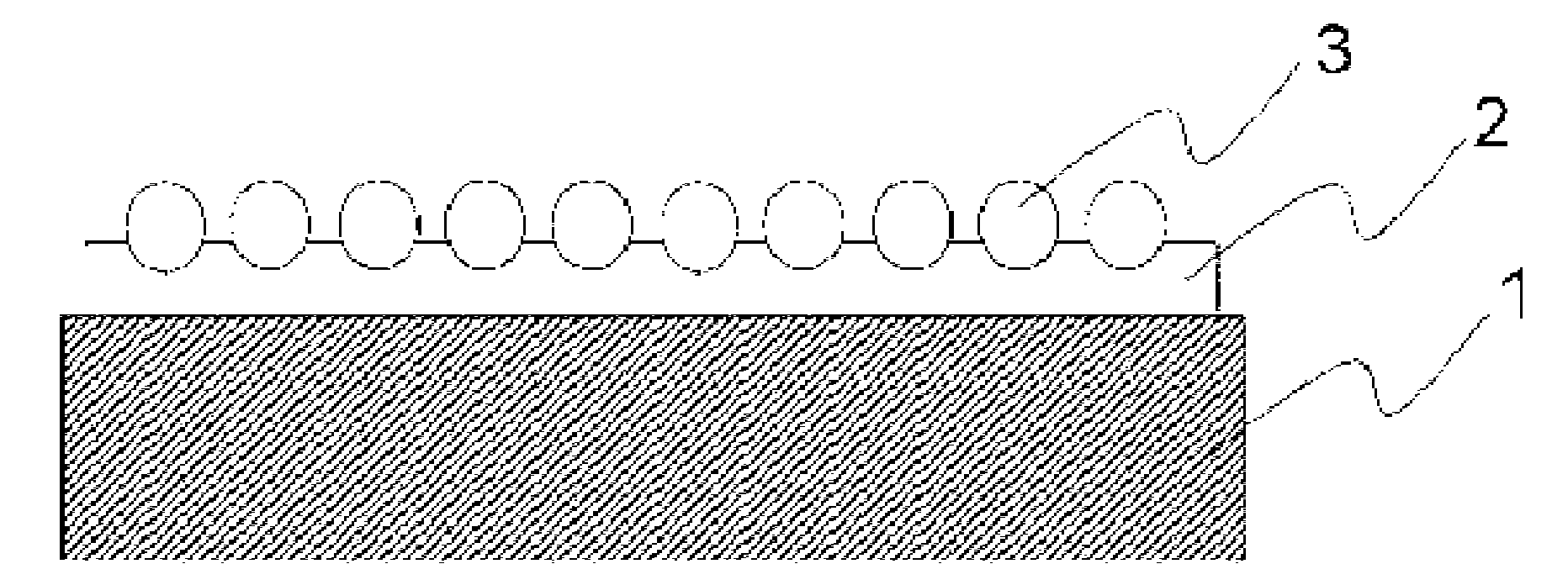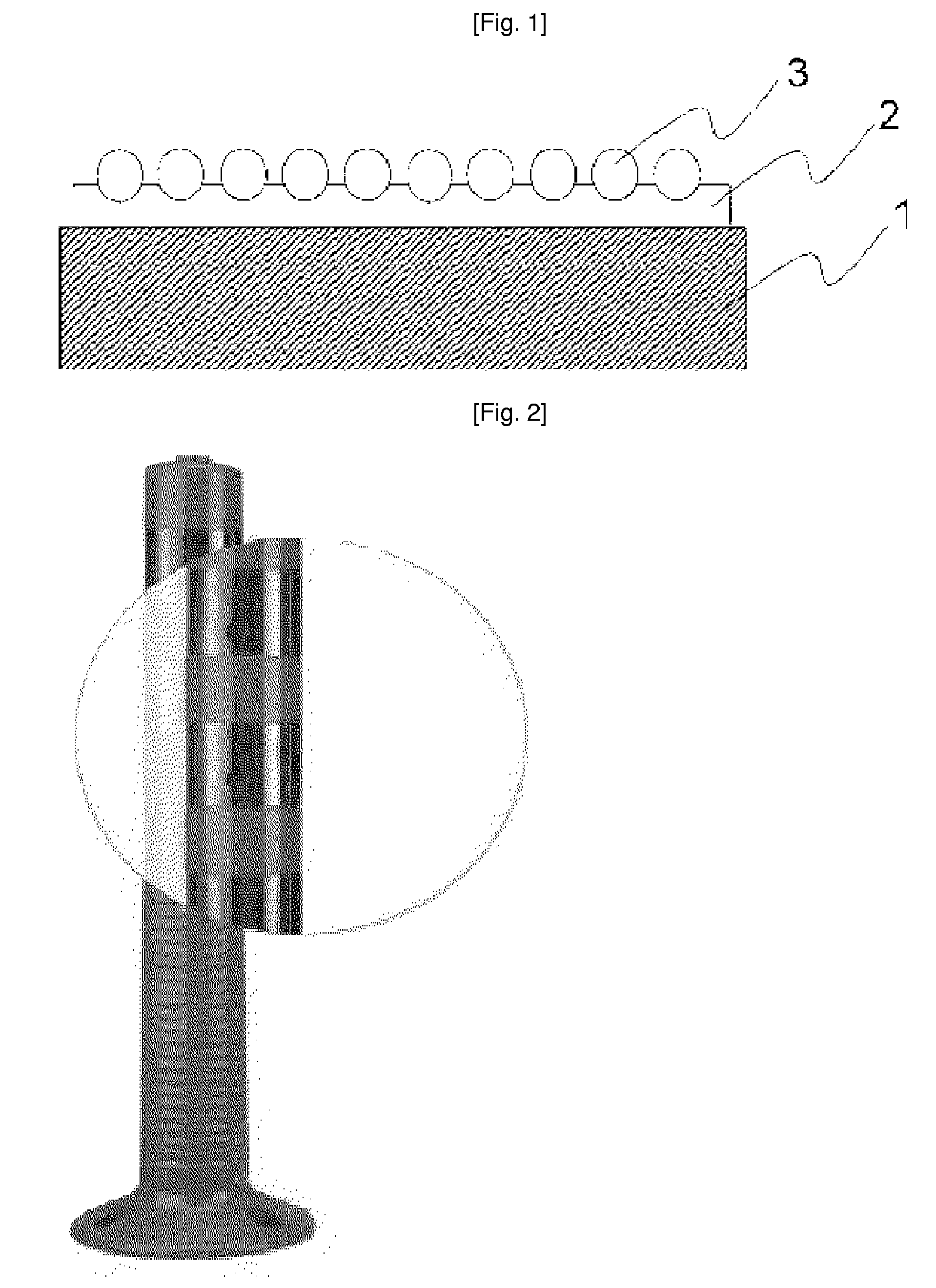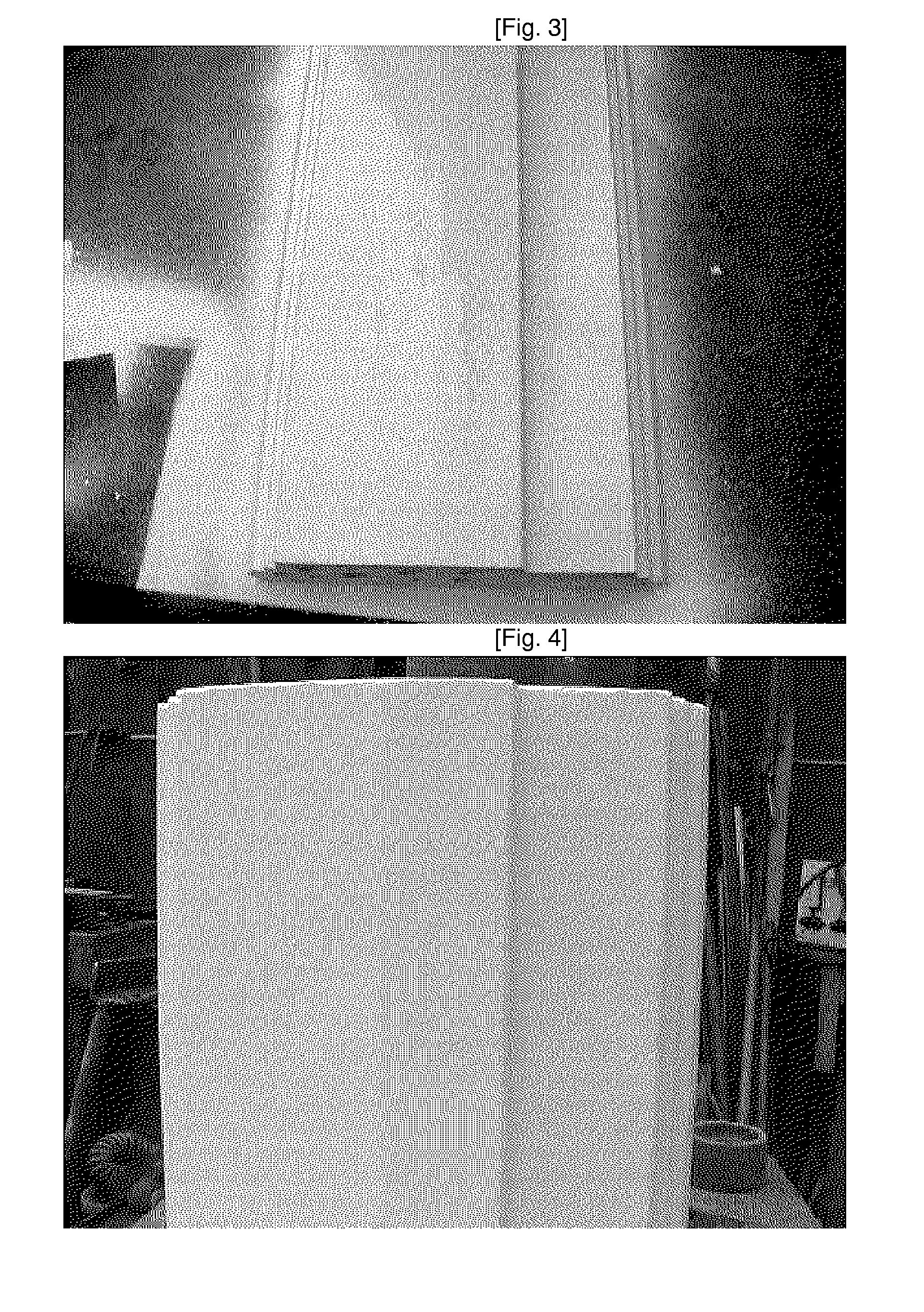Structure of Preventing Sticking and Method of Preparing the Same
- Summary
- Abstract
- Description
- Claims
- Application Information
AI Technical Summary
Benefits of technology
Problems solved by technology
Method used
Image
Examples
example 1
[0080]Anti-adhesion mechanisms with glass bead protrusions which were adhered to the surface of an urethane resin were prepared by coating 1 kg of urethane resin on a steel, aluminum, resin frame, transparent resin plate, glass and concrete of 25 cm×15 cm, respectively in a thickness of 1 mm, spraying 800 g of glass beads having an average diameter of 0.1 mm before the urethane resin was hardened and hardening them. In particular, the resin frame to which the anti-adhesion mechanism was applied is shown in FIG. 3 and FIG. 4.
[0081]Tapes with adhesives thereon were adhered to one side of the above-prepared steel, aluminum, resin frame, transparent resin plate, glass and concrete with the anti-adhesion mechanism, respectively. As a result, tapes did not cling to any one of the steel, aluminum, resin frame, transparent resin plate, glass and concrete. Furthermore, the steel, aluminum, resin frame, transparent resin plate, glass and concrete with the anti-adhesion mechanism were tainted ...
example 2
[0083]Anti-adhesion mechanisms were prepared in accordance with the same method as Example 1, with the exception that glass beads having an average diameter of 50 μm were used.
[0084]With regard to the steel, aluminum, resin frame, transparent resin plate, glass and concrete with the anti-adhesion mechanism formed thereon, tape adhesion test was carried out in accordance with the same method as used in Example 1. As a result, tapes did not cling to any one of the steel, aluminum, resin frame, transparent resin plate, glass and concrete, and even when strong pressure was applied during adhesion, the tapes were easily detached.
example 3
[0085]After 1 kg of an urethane resin was evenly mixed with 1 kg of a glass powder having an average diameter of 200 meshes and a specific weight of 2.54 and the mixture was coated on a steel, aluminum, resin frame, transparent resin plate, glass and concrete, respectively, anti-adhesion mechanisms were prepared by performing the same method as Example 1. As a result of the tape adhesion test according to the same method as used in Example 1, they showed anti-adhesion effects equal to Example 1.
[0086]Further, external pressure was applied to the anti-adhesion mechanisms prepared in Examples 1 and 3 to see whether the glass beads fell off. As a result, the anti-adhesion mechanisms of Example 3 where the glass powder was added showed more excellent bonding ability to glass beads than those of Example 1 where no glass powder was used.
PUM
| Property | Measurement | Unit |
|---|---|---|
| Percent by mass | aaaaa | aaaaa |
| Percent by mass | aaaaa | aaaaa |
| Percent by mass | aaaaa | aaaaa |
Abstract
Description
Claims
Application Information
 Login to View More
Login to View More - R&D
- Intellectual Property
- Life Sciences
- Materials
- Tech Scout
- Unparalleled Data Quality
- Higher Quality Content
- 60% Fewer Hallucinations
Browse by: Latest US Patents, China's latest patents, Technical Efficacy Thesaurus, Application Domain, Technology Topic, Popular Technical Reports.
© 2025 PatSnap. All rights reserved.Legal|Privacy policy|Modern Slavery Act Transparency Statement|Sitemap|About US| Contact US: help@patsnap.com



